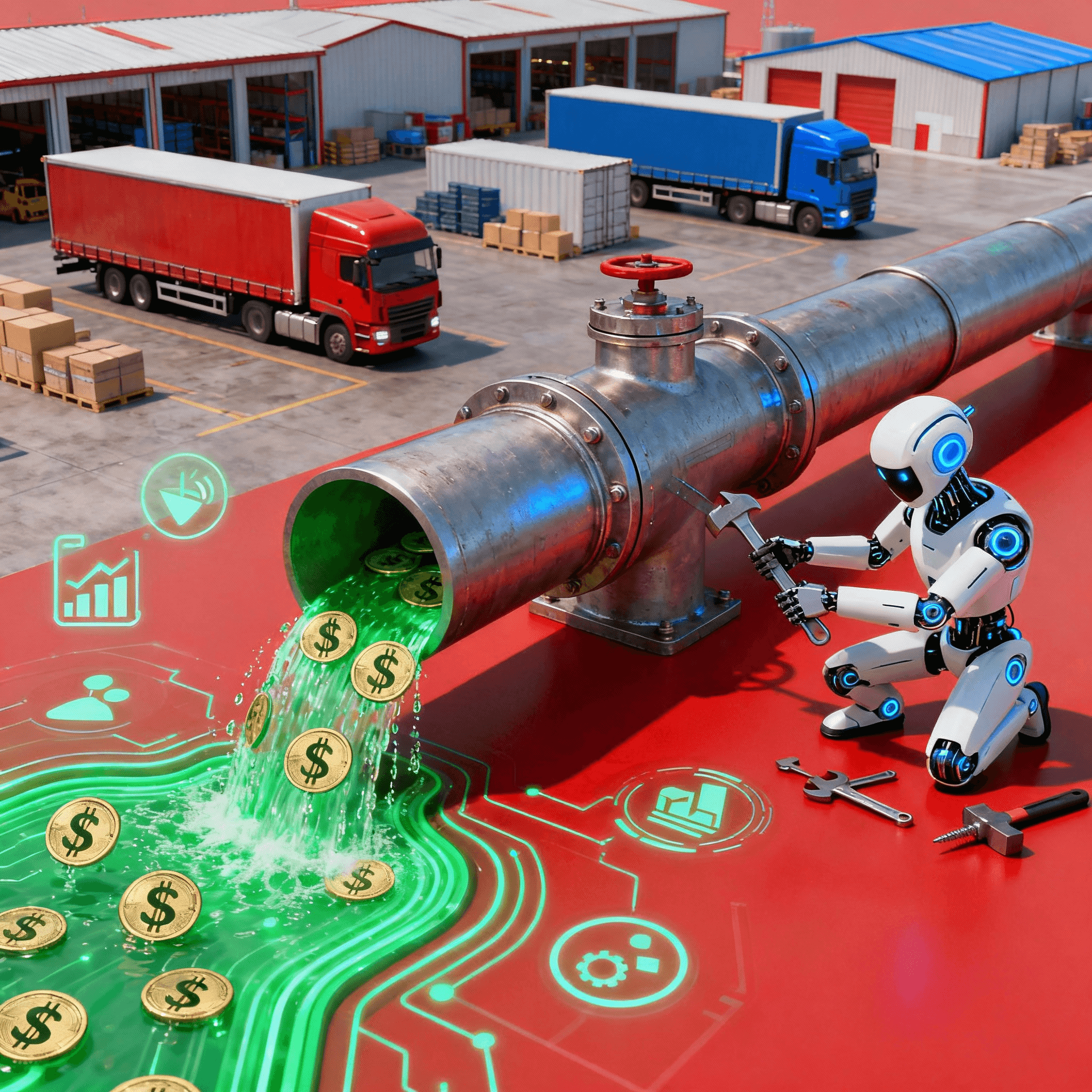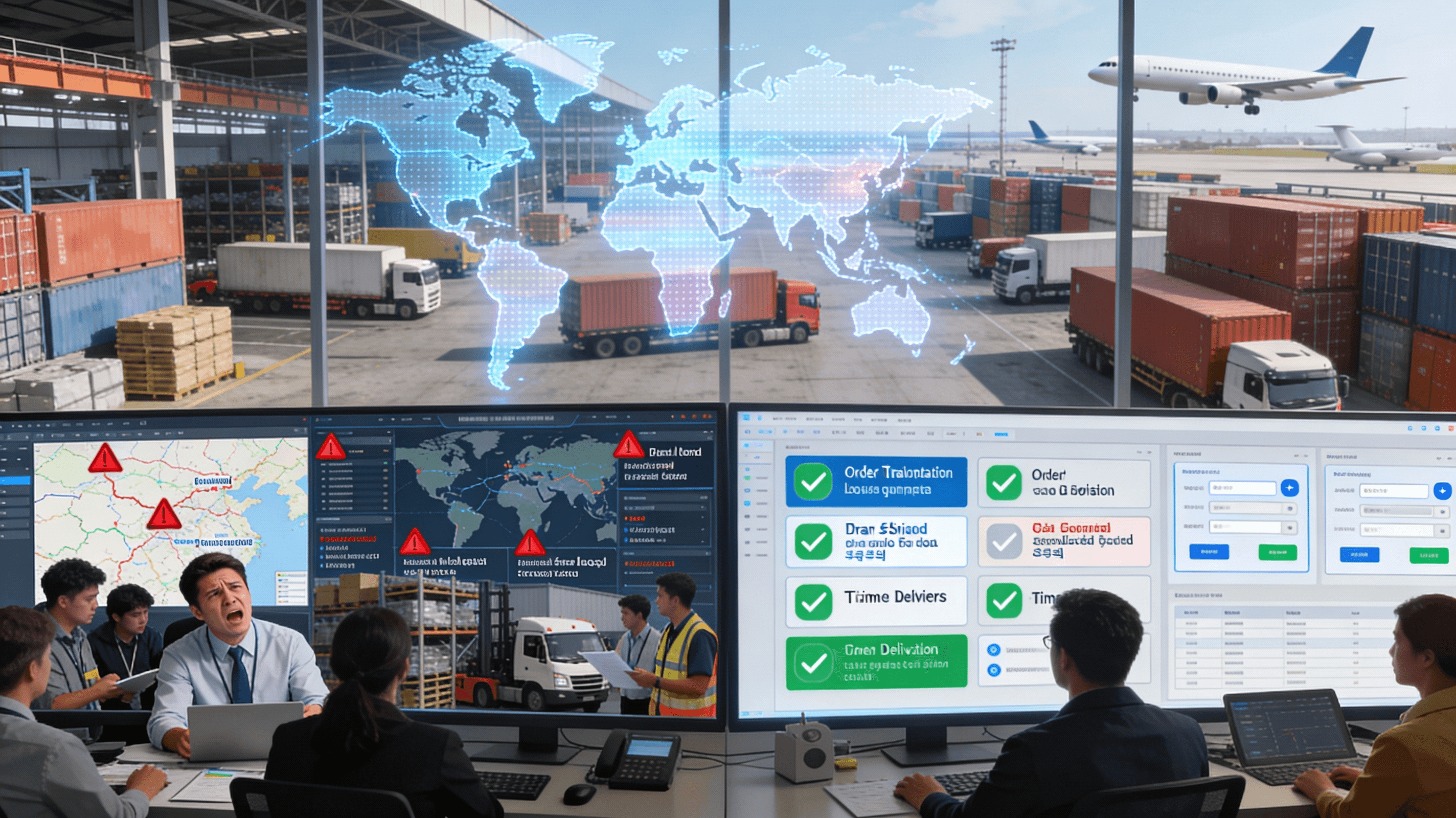Automating Logistics Workflows: ROI of Eliminating the $2.8B Bottleneck
Monday, 27 Oct 2025
|
Introduction: The Silent Profit Killer in Your Operations
In the logistics industry, a staggering $2.8 billion is lost annually not to fuel costs or fleet inefficiencies, but to a silent, pervasive bottleneck: manual communication. Operational staff, from coordinators to customer service agents, spend 30-40% of their day manually managing a relentless flood of emails, processing documentation, and coordinating with stakeholders—tasks that are repetitive, error-prone, and a massive drain on resources. For logistics executives, this communication overload isn't just an operational headache; it's a direct hit to the bottom line, inflating costs, delaying shipments, and eroding customer trust.
This comprehensive ROI analysis dissects this multi-billion-dollar problem and presents the definitive solution: automating logistics workflows with intelligent AI agents. By deploying autonomous systems to handle email, documentation, and coordination, organizations can reclaim thousands of hours of lost productivity, reduce operational costs by up to 25%, and achieve a return on investment within 6-9 months. We will explore the tangible financial benefits, provide a step-by-step model for calculating your own ROI, and outline a 90-day implementation plan. For CEOs, CXOs, and COOs aiming to build a lean, profitable, and scalable operation, eliminating this communication bottleneck is the single most impactful lever you can pull in 2025.
The Anatomy of the $2.8 Billion Bottleneck
The massive financial drain from manual communication stems from three core operational areas, where skilled logistics professionals are bogged down by low-value, high-volume tasks instead of focusing on strategic, revenue-generating activities.
Email Overload and Manual Triage: The average logistics coordinator receives over 100 emails per day, ranging from simple shipment status inquiries ("Where is my package?") to complex quote requests and urgent exception alerts. Staff spend hours manually reading, categorizing, and forwarding these messages to the right person or system. This manual triage introduces significant delays—with average response times exceeding 2 hours—and a human error rate of up to 15%, leading to missed opportunities, service level agreement (SLA) failures, and frustrated customers.
Repetitive Documentation Processing: Every shipment generates a mountain of paperwork: bills of lading (BOLs), customs declarations, proofs of delivery (PODs), and invoices. Manually extracting data from these documents, verifying it for accuracy, and entering it into a TMS or ERP system is a tedious process that consumes an estimated 20% of an operations team's time. Errors in this process can lead to costly compliance fines, payment delays, and disputes with carriers and customers.
Fragmented Stakeholder Coordination: A single shipment can involve a dozen different stakeholders—the shipper, the consignee, the carrier, the freight forwarder, the customs broker, and the warehouse manager. Coordinating between these parties via phone and email is a constant back-and-forth of follow-ups and status checks. This lack of a single, automated source of truth results in misaligned expectations, duplicated effort, and significant delays as teams wait for information from one another.
Cumulatively, these inefficiencies create a drag on the entire organization, limiting scalability and forcing companies to hire more staff simply to keep up with the communication workload, rather than to grow the business.
The Solution: AI Agents for End-to-End Communication Automation
AI agents, powered by Natural Language Processing (NLP) and Large Language Models (LLMs), are purpose-built to eliminate this communication bottleneck. They act as autonomous digital employees that can read, understand, and act on the complex, unstructured data found in emails and documents, integrating seamlessly with your existing logistics systems.
These agents are not simple chatbots; they are sophisticated workflow engines that can:
- Triage and Route: Instantly read an incoming email, understand its intent (e.g., quote request, status update, complaint), extract relevant data (like a PO number or container ID), and automatically route it to the correct workflow or person.
- Execute Tasks: Autonomously perform end-to-end tasks, such as generating a quote based on real-time market rates, creating a booking in the TMS, or sending a proactive delay notification to a customer.
- Process Documents: Use computer vision and NLP to "read" documents like BOLs and invoices, extract all necessary data with over 99% accuracy, validate it against system records, and automatically update the TMS/ERP without any human data entry.
- Coordinate and Communicate: Serve as a central communication hub, providing real-time status updates to all stakeholders via their preferred channel and proactively coordinating between parties when an exception occurs.
By automating these workflows, AI agents can handle up to 80% of routine communication tasks, freeing up your skilled human team to focus on complex problem-solving, strategic initiatives, and high-touch customer relationships.
Deep Dive: ROI Analysis of Automated Workflows
The financial case for automating communication is overwhelmingly positive, with returns realized through direct cost savings, increased productivity, and enhanced revenue opportunities.
Automating Email Triage and Response (ROI: 200-300%)
By deploying an AI email agent to manage your primary operations inbox, you can achieve immediate and substantial returns.
- Cost Savings: An AI agent can handle the work of 3-4 full-time employees who would otherwise be manually sorting emails. With an average logistics coordinator salary of $55,000, this translates to direct labor cost savings of $165,000 to $220,000 per year.
- Productivity Gains: The agent reduces the average email response time from hours to under 60 seconds. This speed allows your team to process quotes 50% faster, leading to a higher win rate and increased revenue. It also dramatically improves customer satisfaction, with studies showing that a 5-minute response time leads to a 9x higher chance of converting a lead.
- Error Reduction: Automated data extraction from emails eliminates manual data entry errors, reducing the frequency of costly mistakes like incorrect bookings or pricing by up to 90%.
Autonomous Documentation Processing (ROI: 150-250%)
Automating the handling of BOLs, PODs, and invoices delivers significant back-office efficiencies.
- Cost Savings: AI agents can process documents at a cost of less than $0.10 per document, compared to an average of $2-4 per document for manual processing. For a company handling 10,000 documents a month, this represents an annual saving of over $350,000.
- Accelerated Cash Flow: By automating POD and invoice processing, the order-to-cash cycle can be shortened by 5-7 days. For a company with $100 million in revenue, this can free up over $1.5 million in working capital.
- Compliance and Accuracy: With 99%+ accuracy, AI agents eliminate the risk of compliance fines from customs or disputes with carriers due to data entry errors, saving an average of $50,000 per year in chargebacks and penalties.
Intelligent Stakeholder Coordination (ROI: 100-200%)
An AI agent acting as a central coordinator streamlines communication and improves visibility for everyone.
- Productivity Gains: By providing all stakeholders with a single, automated source for real-time status updates, agents eliminate the endless chain of "Where is my shipment?" emails and phone calls. This frees up 10-15 hours per week for each member of your operations team.
- Reduced Dwell Times and Demurrage: Proactive, automated communication prevents costly delays. For example, an agent can automatically notify a warehouse of an incoming truck's ETA, ensuring staff are ready to unload it immediately and avoiding demurrage fees that can exceed $100 per hour.
- Enhanced Customer Retention: Providing customers with proactive, real-time updates on their shipments is a powerful differentiator. Companies that offer this level of visibility see a 15-20% increase in customer retention rates.
A Financial Model for Calculating Your ROI
To estimate the potential ROI for your own organization, you can use this simple, powerful model:
1. Calculate Your Annual Cost of Manual Communication:
- Cost = (Number of Ops Employees) x (Average Employee Salary) x (% of Time Spent on Manual Comms)
- Example: 20 employees x $60,000/year x 35% = $420,000 per year
2. Estimate Your Annual Savings from Automation:
- Savings = (Annual Manual Cost) x (Automation Efficiency Gain)
- Example: $420,000 x 80% Automation = $336,000 in savings
3. Calculate Your Net ROI:
- ROI = (Annual Savings - Annual Platform Cost) / Annual Platform Cost
- Example: ($336,000 - $60,000) / $60,000 = 460% ROI in the first year
This conservative model doesn't even include the significant second-order benefits of increased revenue from faster quoting, improved customer retention, and the ability to scale your business without a linear increase in headcount.
Explore More on Debales.ai
- The USD2.8B Logistics Email Problem: Why Shared Inboxes Aren't Enough
- AI Agent Economics: Real Cost Savings Beyond Automation in Logistics
- Digital Documentation Revolution: How AI Email Agents Handle Freight Paperwork
- AI-Driven Email Triage: Slashing Logistics Response Times
- Seamless API Orchestration: How Email AI Agents Bridge Legacy TMS and Modern Platforms
Stop Wasting Resources and Start Automating
Your team's time is your most valuable asset. Stop letting it get consumed by manual, repetitive communication tasks. See how much you can save by automating your logistics workflows.
Get Your Custom ROI Analysis from Debales.ai
Conclusion: Turning Communication from a Cost Center into a Competitive Advantage
The $2.8 billion communication bottleneck is a solvable problem. By strategically deploying AI agents to automate email, documentation, and coordination workflows, logistics companies can unlock massive efficiencies, slash operational costs, and deliver a superior customer experience. The ROI is not just compelling; it is immediate and transformative, offering payback periods of less than a year. For executives navigating the complexities of the 2025 logistics landscape, workflow automation is no longer an option—it is the essential foundation for building a profitable, scalable, and resilient enterprise.


